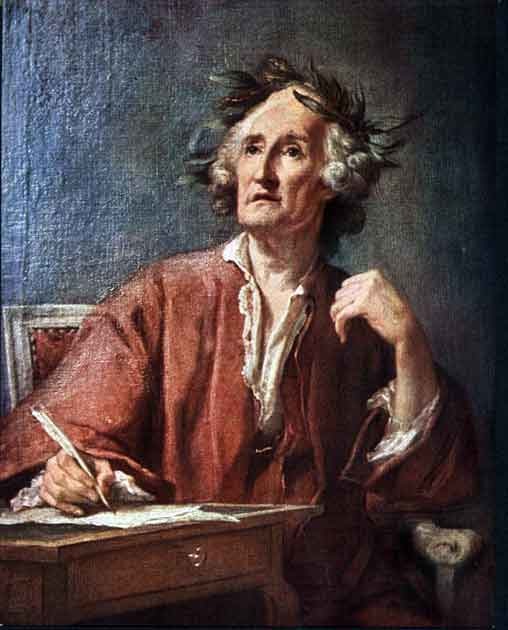 Jean-Philippe Rameau: Hippolyte et Aricie, “Ou suis-je?”
Jean-Philippe Rameau: Hippolyte et Aricie, “Ou suis-je?”
Jean-Philippe Rameau was extremely tall and thin, “more like a ghost than a man.” He had a sharp chin, no stomach, flutes for legs and his eagle profile was aesthetically so attractive that hardly any portraits show him full face. His striking physical appearance none withstanding, his personality was rather abrasive. According to Dagoty, Rameau “seems to have enjoyed no close friendships; the emptiness he found in society made him avoid it.” He had a “loud voice,” and his speech was difficult to understand, just like his handwriting, which was never fluent. “As a man, he was secretive, solitary, irritable, proud of his own achievements, brusque with those who contradicted him, and quick to anger.” Although lacking in social graces, Rameau had two all-consuming passions: Marie-Louise Mangot and Music.
Rameau was an intensely secretive and private man, and we have very little biographical information about the first forty years of his life. That all changed when he moved to Paris for good. Nothing is known about the period of courtship, but we do know that he got married on 25 February 1726 in the parish of St. Eustache. He has forty-two and the blushing bride was nineteen. Marie-Louise Mangot came from a musical family from Lyon and was a good singer and instrumentalist. Her father Jacques had come to Paris around 1700, and he was called “musician” and in her marriage settlement identified as “symphoniste du roi.” Marie-Louise was described as having distinguished manners, a good upbringing, a gift for music, a very pleasing voice and “un bon goût pour le chant.” She was not a professional musician, but nevertheless sang in several performances of her husband’s operas. She performed in Hippolyte et Aricie in 1734, Castor et Pollux in 1738 and Les Fêtes d’Hébé in 1740.
Despite the rather substantial age difference and Rameau’s volatile temper, the marriage seems to have been a happy one. The union produced two boys and two girls, and Rameau generously supported them financially. When his daughter Marie-Louise became a Visitandine nun — an order founded by St. Francis de Sales and St. Jane Frances de Chantal at Annecy in 1610 — Rameau gave her a considerable dowry. Rameau’s enemies, and he made plenty during his lifetime, tended to exaggerate his faults. One has to look no further than Denis Diderot’s satirical novel Le Neveu de Rameau (Rameau’s Nephew), in which the character of Rameau is presented as extremely unreliable, ironical and self-contradicting. Rameau might have lacked social grace, but he apparently was devoted to his wife and his children. His other passion, of course, was music. I will tell you about that love affair next time.
Rameau will be celebrated with the Concert d’Astree at the French May.
More Love
- Untangling Hearts
Klaus Mäkelä and Yuja Wang What happens when two brilliant musicians fall in love - and then fall apart? -
 The Top Ten Loves of Franz Liszt’s Life Marie d'Agoult, Lola Montez, Marie Duplessis and more
The Top Ten Loves of Franz Liszt’s Life Marie d'Agoult, Lola Montez, Marie Duplessis and more - Mathilde Schoenberg and Richard Gerstl
Muse and Femme Fatale Did the love affair between Richard Gerstl and Mathilde Schoenberg served as a catalyst for Schoenberg's atonality? - Louis Spohr and Marianne Pfeiffer
Magic for Violin and Piano How did pianist Marianne Pfeiffer inspire a series of chamber music?


I heard that his wife Marie Louise Mangot made up the song Frere Jacques and sang it to her little brother and then to her own children as they grew up. Jean Philippe took it and published it somewhere, somehow with his name.